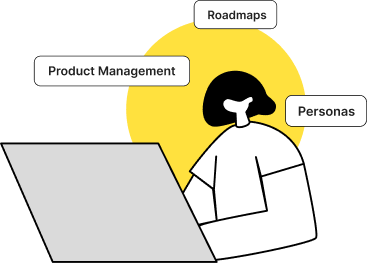Day Two is underway. It is a scorching 37 degree centrigrade at 8AM. 44 teams from 21 countries have brought their solar cars for the 5-day World Solar Racing (WSR) Challenge (2020), in the Australian Outback.

The teams represent universities from all over the world and their cars are powered only by the Sun ????
It’s like F1 racing for solar cars. I was surprised to learn that the first race happened in 1987 (why aren’t we driving solar cars already?). WSR is different compared to a typical racing competition. In WSR, teams are pushing the possibilities of solar-tech, in a contest that puts the cars through a test that lasts around 3000 km (2000 mile).
Vision = Sustainable Mobility
We know the impact of fossil fuels, billions of tons of carbon released every year, and the innovation here only making new records in solar cells, battery-tech, and mileage (ok, range). The participants from various countries are driven by a singular passion to find greener ways of transportation, or in other words Sustainable Mobility.
Race Strategy = Energy Neutral
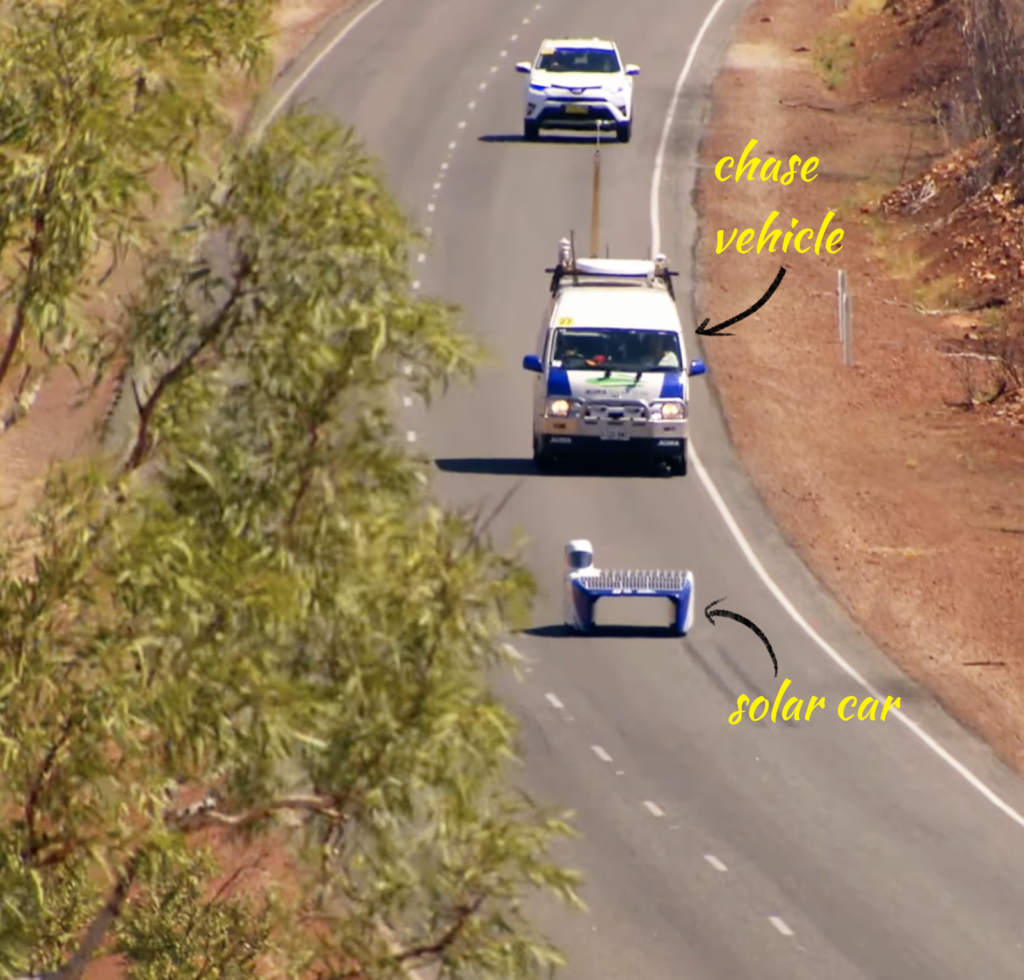
(WSR 2020) Team Agoria’s Race + Chase Vehicle
Every race team spends time in the backseat of a chase vehicle, running hundreds of calculations during the race.
Catching up with the other cars comes down to the strategy developed over two years with meticulous design and simulation runs.
At any time of the day, teams can predict stats/ consumption/ standings with the following-
- weather forecasts and how it would change their race strategy
- battery percentage at different times of the day
- simulation of the race and if they can catch up with someone ahead
- approx. arrival time at the dedicated Control Stops in the race
Strategic Elements = Winning Levers
For teams to win, they have to constantly measure and optimize factors driving speed and weather conditions to make through the 5-day challenge.
Number one on the list is Energy Management
The perfect condition is being energy neutral.
At the heart of any team’s strategy is how the energy is being consumed – and the car juggling between the solar panel, battery and motor.
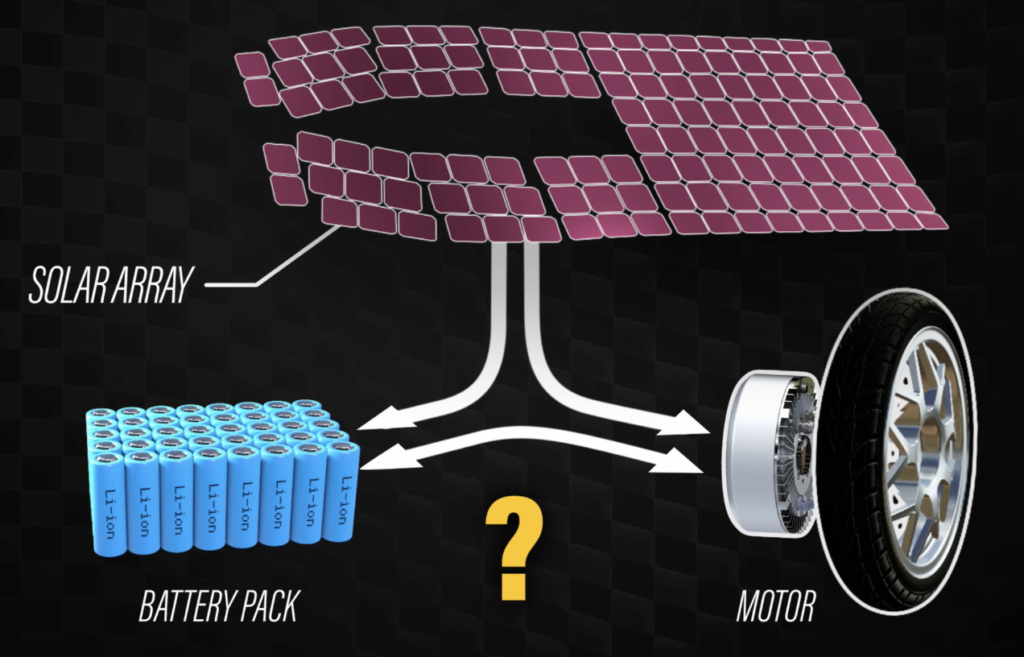
When race cars only use Sun’s energy to maintain speed
IDEAL SCENARIO: Input = Output (400W)
ACTUAL SCENARIO: Not always
You have to continuously monitor and optimize the car’s energy consumption. As there are varying conditions (driver, sun, route, rival cars), teams run race simulation that can almost accurately predict how fast the car should be going at.
Route and Weather
Next is the route and the weather forecast during the race.
“Rocky mountains on the route? Sandy roads?”
Type of route defines the amount of energy needed to travel through the race. These are studied before preparing the race strategy.
“It was sunny when the race began in the morning. 3 hrs into the race, and oh, there’s a cloud coming in, what do we do now? Slow down and not waste energy, or speed up to get out of the cloud as soon as possible?
Always watching the weather because the Sun is the most important thing.
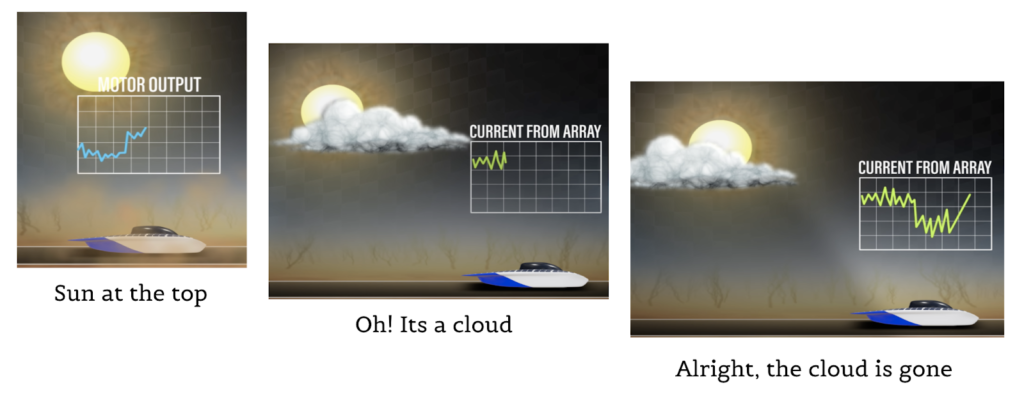
The race team will need constant weather forecasts to predict the power input to the vehicle from the sun during each day in the race. Changes in the weather conditions should be accommodated in deciding how the race car is driven.
Marathon – Sprint – Marathon
Based on race conditions, the driver will be constantly receiving instructions about the speed to be maintained.
Some parts of the race require heavy battery usage and you want to drive faster –
- To overtake another car (biggest drain)
- Dip in sun’s energy due to cloud coverage
- Make up time in the race
- Fighting winds
A team’s most important concern is – if they run out of battery power – they have to stop and recharge the car.
Climate change is very evident in the world today and with the solar car, teams are working on the tech which might open up possibilities and accelerate solar-tech adoption.
Drawing Parallels -> Product Strategy
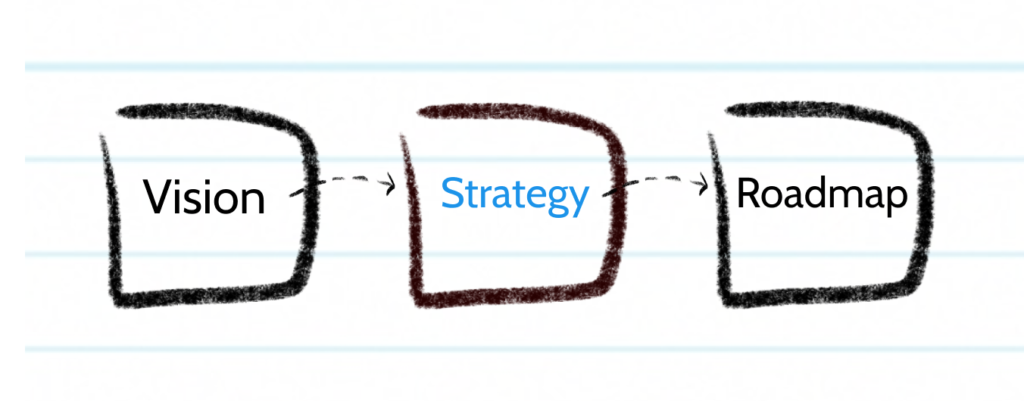
Whether it is surviving under the clouds or achieving optimal usage of energy or even deciding when to drive fast to catch up with rival cars, there are a lot of similarities between solar racing and product strategy.
Feature adoption, user retention, managing churn and entering new markets – the challenges product teams take on have to be dealt with the right understanding of the winning elements:
- Setting the right Goals
- Understanding of the Market + user needs
- Defining the core Product Value + Differentiators
While we execute daily, in the product development journey, wearing a different lens puts things in perspective.
While the race teams are meticulously simulating the driving conditions and designing the car for the next race – great product teams are betting on the future, with constant efforts to understand the user needs, industry trends, the tech and the market all the while preparing for their next race.
Game on!
—Watch the entire solar race behind-the-scenes episodes here.
